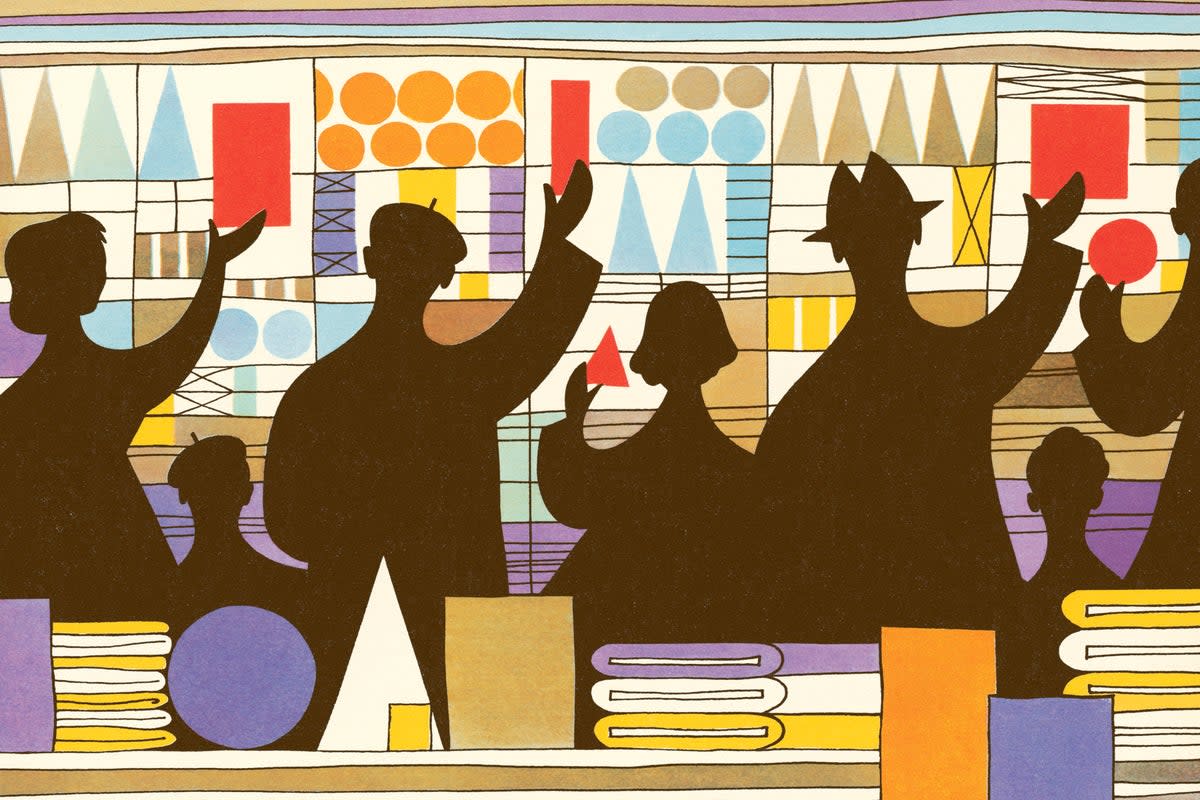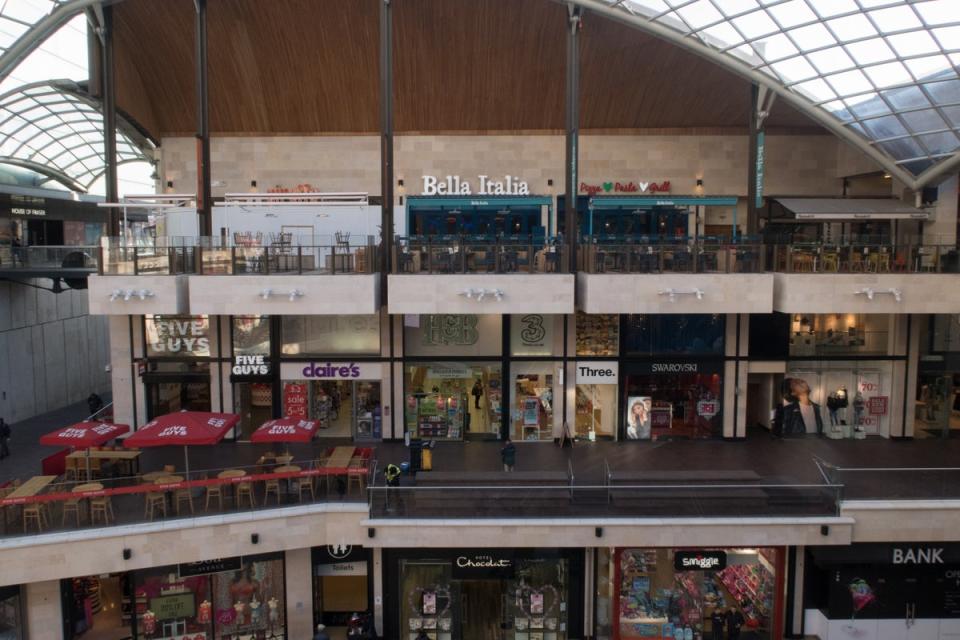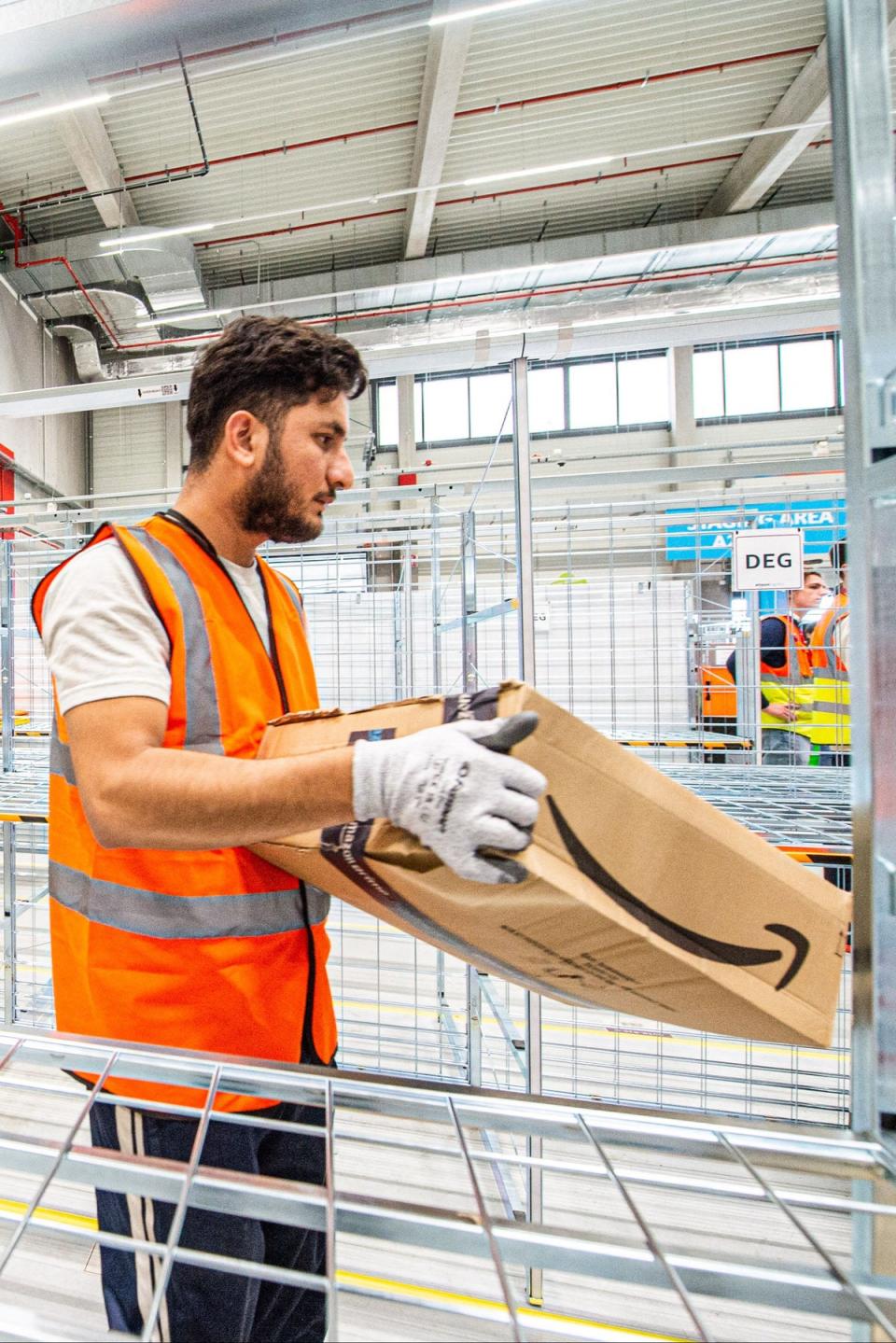If we’re sick of buying online and the high street has died, where will we shop?

The first time I remember being lost to the power of shopping was when I was 15, and my mum and I had boarded the bus to Oxford Street. My cousin was turning 16, and we needed to buy a gift. Ultimately, our search was unsuccessful. The high street had been too much of a thrill, and we’d lost track of time and space to one of central London’s densest retail hotspots.
Soon it became a weekly trip, though making actual purchases was never really the point. It was about bonding in the changing rooms and roaming around the vast depths of that giant New Look on the corner near Marble Arch. Later, it was about rifling through the rails of colourful matching sets of underwear at La Senza. It was about Big Topshop (RIP).
Thinking about all this now is mildly depressing. The memories feel like relics from a different lifetime, one without smartphones and Depop. Recently, I read an article by Dolly Alderton that spoke to that same melancholy. In the piece, which was published in The Sunday Times Style magazine, she describes shopping as a nostalgic act, explaining that all her “firsts” happened at the Harlequin Shopping Centre in Watford. “I’d like to do more IRL shopping,” she writes. “I really think it’s such an art form and a type of socialising that has gone now.”
Indeed, it is. When was the last time you bought anything in person that wasn’t, like, a four-pack of toilet roll or an emergency pair of socks? Can you even remember a time when you arranged to “go shopping”? Or to meet a friend at your local high street? What changed? It’s easy to say that the rise of online shopping is to blame for all this. But I don’t think it’s quite so simple.
According to a 2023 report by PwC, the spike in online shopping that took place during the pandemic (when in-person shopping ground to a drastic halt, along with anything else that happened outside of our homes) has since stabilised – it now accounts for roughly 35 per cent of all sales in the UK. But overall footfall on the high street is between 10 and 20 per cent below the level it was before Covid. The report also found that more chain stores were leaving the high street, while a total of 14,081 shops and outlets exited high streets, shopping centres and retail parks in 2023, which is equivalent to 39 closures each day.
“There are lots of factors that have impacted the retail world and by extension our high streets in recent years,” says Dr Lucy Montague, senior lecturer at Manchester Metropolitan University and special adviser to the House of Lords built environment select committee. “This includes decreased home ownership, decreased car ownership, and reduced consumer spending power thanks to the cost of living crisis.” Dr Montague also points to the impact of the business rates review of 2017, which she explains has left physical retail and hospitality with unsustainable tax rates alongside increased material, energy and labour costs.
The decline of the big chains caused huge ruptures to the high street, and we need to view high streets as an ecosystem, like a resilient wildflower meadow, not a monoculture relying on one type of crop
Vicky Payne, strategic planner
These are among the reasons cited in Dr Montague’s 2022 book, High Street: How Our Town Centres Can Bounce Back From the Retail Crisis, which she co-authored with urban planner David Rudlin and strategic planner Vicky Payne. “In the book, we go through the many ‘crises’ of the high street and conclude that actually, it has been in a state of almost perpetual crisis since the 1950s,” says Payne. “One of those is the ‘Clone Town’ phenomena of the 2000s when there was a huge expansion in retail.” According to a 2004 report from the New Economics Foundation titled “Clone Town Britain”, 41 per cent of surveyed national towns were classed as “clone towns”, meaning they had a higher proportion of chain stores and also offered less variety of services and goods for the local community.
In short, this resulted in a lot of urban retail areas being occupied by the same set of shops, creating an eerie homogeneity on the British high street that made the whole shopping experience feel rather drab. This persists today in many locations and has more tangible consequences than simply making the experience of IRL shopping rather dull. “One of the warnings about the homogenisation of the high street is its vulnerability to shocks in the market,” explains Payne. “This turned out to be incredibly prescient, as we have seen the decline of the big chains cause huge ruptures to the high street. In the book we advocate for viewing high streets as an ecosystem, like a resilient wildflower meadow, not a monoculture relying on one type of crop.”
You’d be remiss to think the big cities are that different. London’s Westfield shopping centres, for example, are more or less filled with the same exact shops. “Retail was making a lot of money when this all started and lots of towns feared that they would miss out,” explains Rudlin. This meant that many areas signed deals with property developers to develop city centres around particular department stores, such as Woolworths or Debenhams. “There were a small number of firms that were involved,” he adds, which might explain why there were often so many similarities. “Then Debenhams collapsed and many of the shopping centres struggled, tipping the town centre over into decline.”

There are psychological consequences to all this, too. “In store, you’re usually buying for your immediate self, but [online], since deliveries come later, it’s for your future self,” explains Richard Shotton, behavioural scientist and author of The Illusion of Choice. “Research shows that what we pick for ourselves in the moment is often very different from what we choose for later.”
He points to a 1998 study conducted in Denmark, which found that people tend to buy what they really want when they’re buying it IRL. “But when they’re thinking about the future, they usually pick what they feel they should have,” he adds. “This suggests that people are more likely to treat themselves when shopping online compared to in-store. That means marketers can tailor their strategies to fit how people shop.” Essentially, this means we might be more reckless when we shop online – I know I certainly am, clicking and tapping away without feeling like I’m even so much as spending a dime, whereas in person I’m usually far more conservative.
But there are many other reasons why I lament the loss of the high street shopping experience. It was a way to spend time with family and friends without the buzzing distraction of our phones. When you’re standing in a changing room with a friend, swapping dresses and commenting on each other’s potential outfits for a night out, you’re not tapping away on Instagram. The whole experience forces you to be totally present in a way that most contemporary situations don’t require. Hence the nostalgia so many of us might feel.
Similarly, online shopping is hardly perfect. Think about how many times you’ve ordered something, only for it to arrive and fit completely differently to how you’d envisaged. Perhaps, like me, you’ve even been scammed into buying underwear from a brand that calls itself “Victoria’s Secret” but is, in fact, a fraudulent impostor.

“In our research for the book, we found that customers post-Covid were seeking a return to in-person shopping,” says Payne. “This was partly because of the unreliability of some online-only retailer products – fast fashion brands where what you see is most certainly not what you get and who have become overwhelmed with the cost of processing returns – but also a fatigue with digital experiences, and a desire to look, touch and feel products and to be out in the world.”
With this in mind, then, perhaps the tide will soon turn. “We believe that the experience of shopping IRL is what will save the high street,” says Rudlin, who predicts a hybrid model moving forward. “The next phase of online retail is an experience in which you visit a shop, try things on, plump the sofas etc… and then buy online. Plus, there is a growth of independents taking the space vacated by the big chains and high streets are becoming more diverse once more. There are signs of hope. High streets have been in constant crisis since the first supermarket opened in the 1950s, but they adapt and survive.”
Let’s hope that they do; I’d like to start making some new traditions.

 Yahoo Lifestyle
Yahoo Lifestyle 
